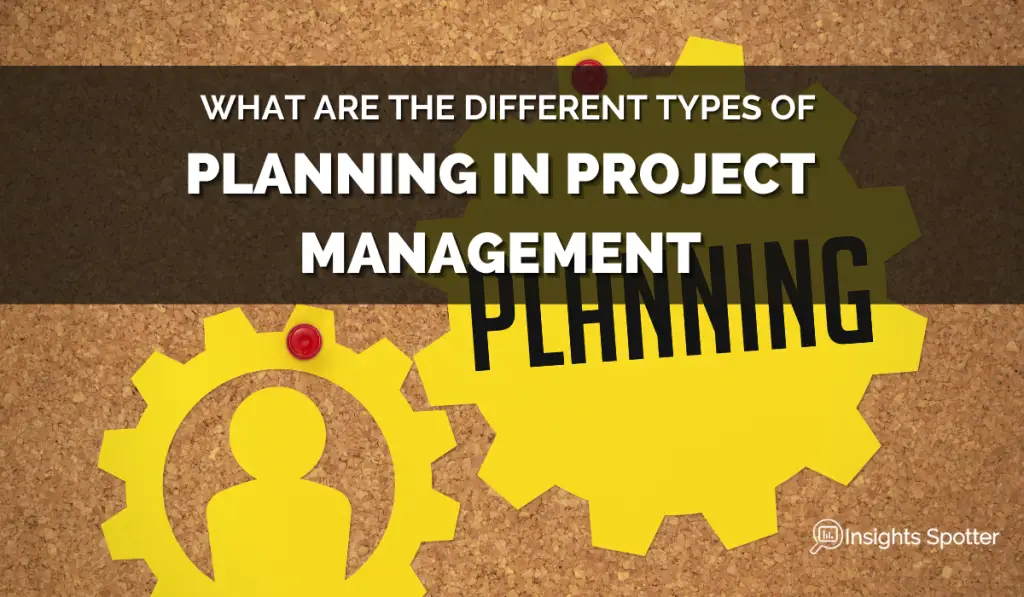Does Agile have a project plan?
You have likely heard about this super flexible project management methodology by the name of “Agile”. The idea behind it is to have a method to manage projects that can adjust quickly to changing environments. I do not know about you, but I see a lot of change around… From COVID-19 to shifts in technology and governments. Still, you may be wondering if Agile is so flexible, does it actually have a project plan?
Agile’s plan is a Roadmap! It is a guiding strategic plan that describes how the product will develop over time with incremental improvements, including vision, strategy and direction. It should answer why and what. A roadmap should also be flexible enough to adjust to changing trends in the market.
In the post, I will explore an example of planning and executing a trip to Japan, which I had done in 2018. If you are wondering, I had a fantastic time. So, we know that our example project will be a success. These days planning trips could definitely benefit from some agility.
Also, I will go through 8 stages, explaining how the whole planning project works in Agile and the traditional project management method Waterfall where possible. But first, let’s bust one myth below.
Myth: Is Agile The Same As SCRUM?
Before we continue, I would like to bust a myth. If you have heard about Agile, you might have heard about SCRUM, which happens to be the most popular Agile management framework.
However, do not be confused that the SCRUM framework, including planning, is the same as Agile planning. SCRUM is usually applied to technology projects, and we will explore planning for all types of projects, especially those that have a more extended period.
If you would like to learn more about Scrum, check out my post “Scrum vs Sprint“.
Why Does Agile Need A Projects Plan Or Roadmap?
Imagine you have an infinite time or budget. Then, you do not need traditional project management; you could apply only Agile’s release, sprints, and daily standups planning principals to run the whole project and planning efforts. It doesn’t matter if you are managing the team using Kanban or SCRUM. The agile process is very fluid, and changes are made regularly, adjusting to situations and most valuable outcomes. The start and end dates are not as important. You just go with the flow.
Sounds great, right!? Though, you could probably see an issue with the above assumptions if you work in usual businesses. We neither have the infinite time nor budget. On top of that, we have business managers or client demanding specific deadlines, costs and definite results.
Trust me, a list of sprints in JIRA will not cut it as a great project plan to satisfy business’s and clients’ needs. Of course, this is a challenging problem if you only use standard Agile release, sprints, and daily standups to plan.
Therefore, for large Agile projects, you need roadmaps as a plan, which will have some initial long term goals similar to traditional project management, but details will change and mould throughout the project. Eventually, the plan will reach maturity after being shaped by real life.
The way the plan is refined, managed, and changed is quite different from traditional project planning, especially in the project’s execution stages. However, the plan will give a solid base to communicate with stakeholders and plan supporting business processes.
There is a misconception for individuals starting in Agile. It is known that the methodology has a lot of collaboration, agility and interactions. Yet, some would assume that means no documentation. This is not the case. Documents serve a slightly different purpose. They are created not to tick the box but to log results after discussions and decisions. You guessed it right! An Agile plan is not an exception.
Let’s see what we can do with 8 steps and using my trip to Japan as an example to set up an Agile project plan.
- Vision
- Broad Strokes or High-Level Items
- Break Down of High-Level Items
- Estimating
- Shipping
- Clear Roadmap
- Bulletproofing
- Continuous Improvement

Step 1: Why Do You Need To Define A Vision In An Agile Project Plan?
Here, we follow a very similar process as in traditional project management. A project manager would engage senior stakeholders to understand a company’s vision and strategic theme for a year, which should dictate the initiative’s goal. Knowing vision serves three purposes:
- It will make visible where the company wants to concentrate its attention and resources. Plus, what is the aspiring outcome, which should align with providing value to customers?
- The company’s goals will influence the project’s objectives.
- When executing the project, we will need to be flexible but do not lose sight of its vision. Thus, a vision gives a framework to follow.
Finally, do not forget to document strategy and vision. It may help you in future problematic conversations about scope, goals, costs, etc.
In my case, we had the vision to see Japan, learn about the culture and try the cuisine. The trip was one of those once in a lifetime trips. We had to allocate a substantial budget and 2 weeks of our holiday time. Thus, we are committing our disposable resources to the vision and hope to have unforgettable memories and loads of photos for the future.
Step 2. What Are High-Level Items In An Agile Project Plan?
We have got our vision, strategy and value we are looking to offer to clients. Now, we need to decide on broad strokes or high-level items to be part of the project.
A project manager (product manager or equivalent) will then work to understand high-level time, budget, and scope needs. In Agile, most of the planning activities happen within the team.
If you have an idea on big-ticket items, you should decide on the number of sprints (i.e. iterations), lengths of sprints (e.g. 2-3 weeks or 1 month) and some inclination of each sprint’s results. Starting to see the project’s high-level scope items helps to facilitate early discussions with senior stakeholders.
In our case, the high-level goals were to have a round trip to Japan and have accommodation in each city. So, these tasks will be our big-ticket items. The round trip would probably be around £1K for each person, and accommodation should not exceed £100 a day per room.
We travelled end of April and started planning the trip in January. So, we had around 4 months; hence, 2-week sprints should give enough frequent feedback to adjust.
Step 3. How To Break Down High-Level Items In An Agile Project Plan?
If you remember above, we figured out the theme “to book accommodation” in each city we are visiting. That is great, but if you planned any such trip you know, it is a big task. Thus, we need to turn this big task into smaller bits known as epics in an Agile world.
How can we split the theme “to book accommodation”? Well, we could start with an epic to plan which cities to visit. Then a second epic to find the best locations in the town. Third, the best value. We would go through all big-ticket items, start splitting where possible and record them in our “to-do” list, also known as a backlog.
A backlog contains all items that have yet to start but are planned and prioritised. They could be still at theme or epic level. Eventually, though, epics will become stories or small bite-size tasks, which the team can complete within one sprint.
Up to this point, what we have seen have clear parallels to traditional project management. However, things will start to diverge. When big-ticket items (a.k.a. themes) and epics are defined, the team would only prepare a detailed plan for the next sprint, which allows the team to reflect and adjust to changing situation in the next sprint. In contrast, the traditional project management would try to prepare the whole plan from start to finish before starting any execution or next phase.
Step 4. How To Estimate In An Agile Project Plan?
Right, we have our big-ticket items, epics and stories in the backlog; now, we need a ruff estimate on each big-ticket items’ timelines. Consequently, we will arrive at an approximate length of the whole project. Moreover, we will use time estimates with a sequence of events and dependencies to update our roadmap.
The easiest way to make an estimate is to compare against something done in the past (top-down approach). You will try to evaluate if a project’s theme as a whole is a smaller or larger piece of work, and by how much? Then assign a time value, which does not have to be 100% accurate yet. Of course, if you have the experience, you will have a better idea of the effort involved. If you are not sure, you may get somebody in the business who has more experience than you.
However, your first estimate is only a first stab to get the discussion going, approve the scope, timeline and budgets. When it comes to sprint planning or execution, you would share the roadmap with teams and get much more precise measurements through discussions and careful evaluation of a team’s effort.
Through estimating and actual work (2-4 sprints), you would establish how much the team can achieve within 1 sprint, which will indicate a velocity. Now, you can attach values to your sprints’ tasks based on complexity. Finally, you would update the roadmap to make it more accurate based on your new estimates (using a bottom-up approach).
As you can see through the process of actually testing team velocity in sprints and using your and your team’s experience, we should be able to arrive at a decent estimate.
We were lucky as Japan’s trip had an obvious timeline. We had our trip at the end of April with 4 months to go. How could we evaluate the initial effort/time involved?
- Let’s say to buy plane tickets, 2 weeks,
- Investigate which cities to visit, 2 more weeks
- Book accommodation, 1 week
- Create a list of attractions with description and printouts, 1 month
- Take a break from working on the trip for 2 weeks 🙂
- Buy all necessary train tickets, insurance, searching for some cool films about Japan, 1 month.
- Packing and getting ready to go, 2 weeks.
All in all, the project will take ~4 months, success!

Step 5. What Is Packaging And Shipping In An Agile Project Plan
Well, generally, in Agile, the team will provide you with a new version of the product at the end of each sprint. Yet, in the longer-term projects, it might not be enough. You need to do some estimation of larger piece items completion dates and have those on the roadmap. In project management, it is also known as significant milestones. In the case of our holiday trip, it could be that accommodation was booked or we bought round trip tickets.
One distinguishing feature of Agile backlogs is the fact that they are sorted by priority. However, you would also want to group them by a theme. Thus, you could consider not only the story’s priorities in sprints but overlap them against larger deliverables in a roadmap. If a milestone is delivered and released, this provides value to the customer faster.

Step 6. When Is The Roadmap Is Clear In Angle?
We have our estimated backlog, releases, and team capacity by this time, which means there is everything we need to obtain a robust roadmap. We know what we will do, how long it will take and who will be doing it. For our holiday, we also need to make sure we finish before it is time to fly!

Step 7. How To Bulletproofing the Roadmap In Agile?
As we said before, Agile is a team’s sport. Time to give your roadmap to your team to provide further enhancements. They could provide some insights around dependencies, which have not been considered. For example, we could not book accommodation in half of the cities until we understood availability in Koyasan, which was very limited.
Furthermore, you would often be working in organisations where the same resources are split between multiple projects. Therefore, the project could adjust the roadmap and timeline accordingly.
Sometimes, epics, which are later in the project, could be split into stories to give more accurate estimates. Thus, keep that in mind.
Additionally, involving the team in the planning process helps them to be part of the whole solution. The point of roadmaps is to plan value delivery to the client or business. The team working on the prioritisation and evaluation process would feel like they are part of the bigger picture. It is quite demotivating when tasks are handed over without any visibility of larger benefits as you do not see the effect of your contribution.
In our case, it was my fiancée who provides invaluable feedback to me and vice versa. The trip could not have been as good or as smooth if we were not working together.
You will need your senior stakeholders’ approval on your roadmap at the end, e.g. a sponsor or financial partner. Hence, working with the team to increase your roadmap’s quality will help you in the future. You would communicate the project’s progress or delays using the same approved roadmap and milestones, and if the timing were off, you would require some explanations.
Step 8: Why You Never Stop Improving The Agile Roadmap
The roadmap is also an evolving document that will undoubtedly change. Hopefully, there will be valuable feedback provided by the customer or team members, who may have noticed a significant issue with deliverables. Do not be afraid of change embrace it and have the proper controls to introduce it.
Even when we were already in Japan, we kept on updating mentally the plan. Changing the restaurant, adjusting attractions or taking some days more comfortably to achieve better overall satisfaction.
Agile Project Plan Or Roadmap Conclusion
As you can see, Agile planning is not much dissimilar to traditional management. Agile planning is emphasising:
- Working in the teams
- Not going too much into details initially if avoidable
- Creating a roadmap, which is based around themes and client value add.
- Lighter planning at the beginning of the project
- More flexibility to change or adjust the plan during the project
- Using terms like themes, epics, stories, sprints, releases and roadmaps, all have equivalent terms in traditional project management.
I hope the post helped you answer a question about Agile planning in full and you have gained a better understanding of the Agile world.
Subscribe to our newsletter!
 ABOUT ME
ABOUT ME
I am an experienced ex. Business & Data Analyst and now a Project Manager with multiple years of experience gained in several international companies.
These days, business problems require data crunching and telling stories to make the right decisions. Simply put, business stakeholders need insights into their projects and deliveries.
This is where I come in. I have learned and applied Python, Power BI, SQL and Excel to analyse and present data. Also, I gained experience in Project Management and Business Analysis. So, I can not only spot insights but execute business decisions. Moreover, I can teach you as well. Read More
Best Books








Latest Blog Posts
- Sustainable Project Management: Trends, Tools, & Strategies
- Unlocking Strategic Value: How NIST CSF 2.0 Shapes Project Choices for Better Outcomes
- Cybersecurity Project Management: Protecting Your Digital Frontier
- What are the Different Types of Planning in Project Management?

- Transforming Project Management with AI Software: Tools, Challenges, and Best Practices
- Unlocking the Benefits of AI-Powered Project Management
Need Project Manager’s Help!?
Check out the Fiverr marketplace if you do not have time to run your own projects or just need extra help. They do have multiple project professionals, including project managers. Maybe you will find just the right fit to take some burden from you. I have used Fiverr in the past. The prices are also not too bad. If you seek PM via the corporate route, it will be easily 5x the price.

